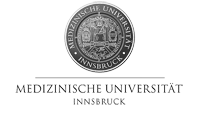|
|
 |
Department of Pediatrics, Medical University of Innsbruck.
Background: Sarcoidosis is an inflammatory disorder of unknown aetiology identifiable by the formation of confluent noncaseating granulomas. It is characterized by lymphocyte and macrophage activation and migration into involved organs. Chitotriosidase belongs to the chitinase protein family and is secreted by activated macrophages. The chitinases are able to catalyze the hydrolysis of chitin or chitin-like substrates such as 4- methylumbelliferyl chitotrioside.
Methods: Chitotriosidase activity was determined using the substrate 4-methylumbelliferylb-DNN’N’’-triacetylchitotriosiose (MUbGlc-Nac, SIGMA Chemical Co). The substrate and serum was incubated with the serum in a citrate/phosphate buffer. The reaction was stopped by adding glycina buffer. The fluorescence of 4-methylumbelliferone was evaluated by fluorimeter at excitation 365 nm and emission 430 nm
Result: We report about chitotriosidase measurements in patients with juvenile sarcoidosis. They presented a serum chitotriosidase level up to 1658 nmol/h/ml at disease onset before therapy. Erythrocyte sedimentation rate (ESR) and angiotensine converting enzyme was elevated. Under medication clinical activity improved, ESR and ACE were normalized. The chitotriosidase levels were below 700 nmol/h/ml. The chitotriosidase level in normal healthy donors was < 500 nmol/h/ml.
Conclusion: Serum chitotriosidase levels could be a marker for disease activity in sarcoidosis.
References: Renkema GH,
Boot RG, Muijsers AO, Donker-Koopman WE, Aerts JM (1995) Purification and
characterization of human chitotriosidase, a novel member of the chitinase
family of proteins. J Biol Chem 270(5):2198-2202.
Michelakakis H, Dimitriou E, Labadaridis I (2004) The expanding spectrum of
disorders with elevated plasma chitotriosidase activity: an update. J
Inherit Metab Dis 27(5):705-706.
